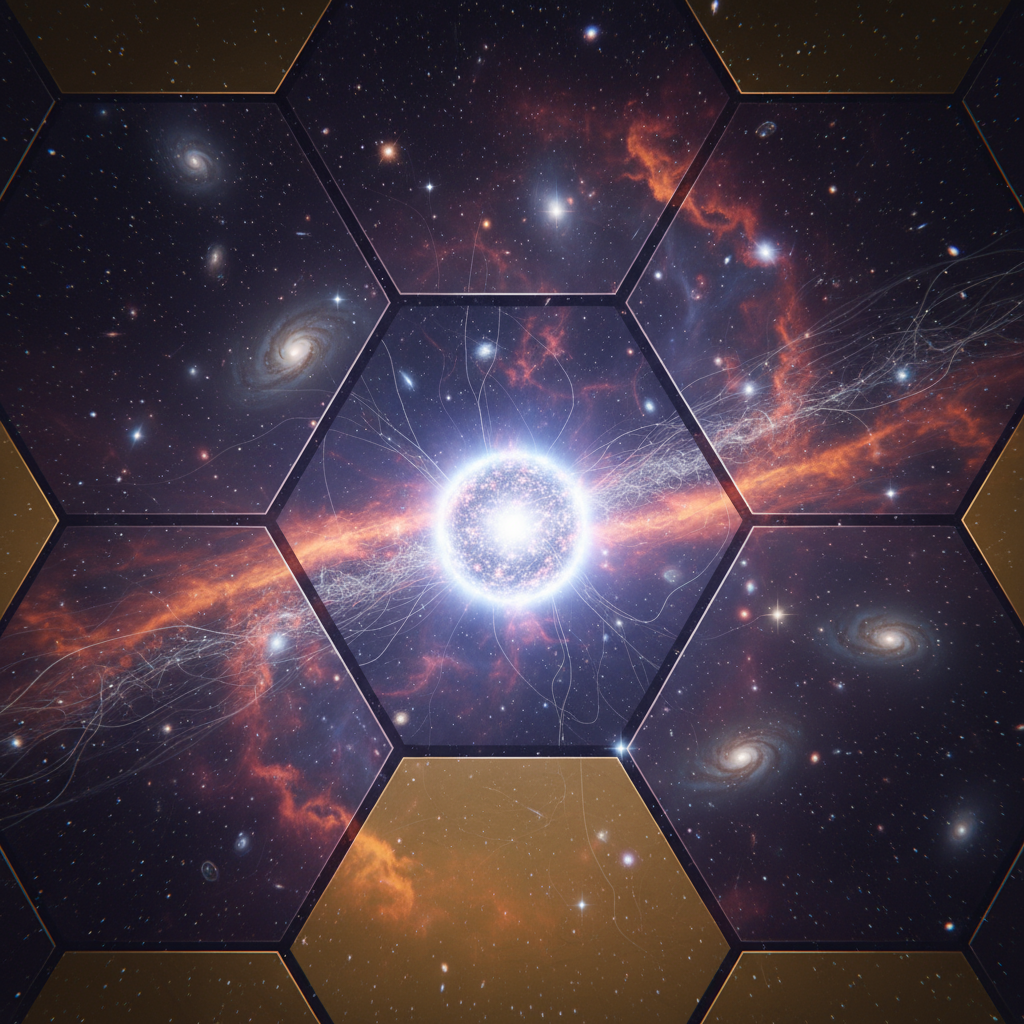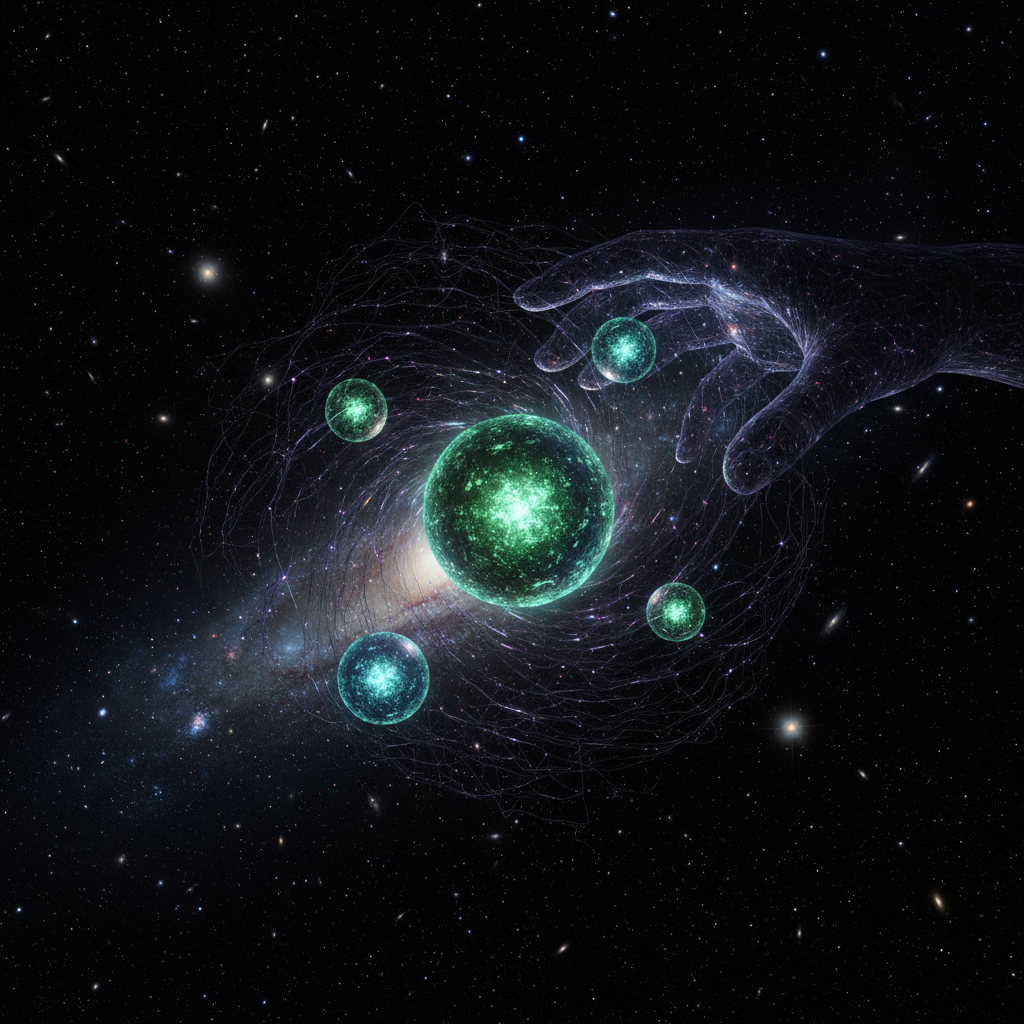JWST’s Latest Revelation: Is Dark Matter Fueling a New Class of Stars?

The cosmos just keeps getting stranger, and the James Webb Space Telescope (JWST) is proving to be our ultimate guide into its most enigmatic corners. Just when we thought we had a pretty good handle on how stars are born, live, and die, a recent discovery from the JWST has dropped a cosmic bombshell. Scientists are now theorizing that the telescope may have observed a brand-new kind of star, one powered not by the familiar fusion of atomic nuclei, but by the mysterious, invisible force of dark matter. This isn’t just a tweak to our stellar models; if confirmed, it completely rewrites a chapter in the astronomical playbook.
The Enigma of Dark Matter: More Than Just Missing Mass

For decades, astronomers have Grappled with the concept of dark matter. We can’t see it, touch it, or directly detect it, yet its gravitational influence is undeniable. It’s the invisible scaffolding that holds galaxies together, accounting for an estimated 27% of the universe’s mass – far outweighing the ordinary matter that makes up everything we can observe. While its existence is largely accepted, its nature remains one of the greatest unsolved mysteries in science. Is it composed of exotic particles, like WIMPs (Weakly Interacting Massive Particles), or something even more bizarre?
Our current understanding of dark matter is primarily based on its gravitational effects. We see galaxies rotating faster than they should if only visible matter were present, and we observe gravitational lensing – the bending of light around massive objects – occurring on scales far larger than visible matter can account for. The search for direct dark matter detection experiments continues globally, hoping to one day capture a fleeting interaction with one of these elusive particles. The idea that dark matter might also be a power source for stars shifts our perspective from merely a gravitational influence to an active participant in stellar evolution.
A Glimpse of the Early Universe: The JWST’s Unparalleled Vision
The JWST was specifically designed to peer back in time, observing the light from the very first stars and galaxies that formed after the Big Bang. Its infrared capabilities allow it to penetrate the cosmic dust and gas that obscured earlier telescopes, revealing unparalleled details of the early universe. It’s in these incredibly distant, and therefore incredibly ancient, observations that the potential dark matter stars have been identified.
Specifically, the JWST has been observing objects in the early universe that appear anomalously bright for their estimated mass and age. These are not just slightly brighter; they are shining with an intensity that seems to defy conventional stellar physics. Standard models of star formation indicate that the first stars, known as Population III stars, should have been massive, hot, and short-lived, composed almost entirely of hydrogen and helium. While the JWST has confirmed some aspects of these predictions, the unexpected brightness of these particular objects has led scientists to consider unconventional explanations. These celestial anomalies are the prime candidates for what some are now calling “dark stars.”
Dark Stars: A Theoretical Framework Comes to Life?
The concept of “dark stars” isn’t entirely new; it’s been a theoretical possibility for over a decade. The idea posits that in the very early universe, vast clouds of hydrogen and helium, enriched with a significant amount of dark matter, could have collapsed under gravity. As these clouds contracted, the dark matter particles within them would have annihilated each other, releasing immense amounts of energy. This energy, in turn, would have heated the ordinary matter, preventing it from collapsing further and forming a star fueled by nuclear fusion. Instead, the star would be supported and powered by the continuous self-annihilation of dark matter.
These hypothetical dark stars would have several distinctive properties. They would be incredibly massive, potentially millions of times the mass of our Sun, and also incredibly luminous, much brighter than typical stars, due to the efficiency of dark matter annihilation. Crucially, they would also be relatively cool on their surface compared to fusion-powered stars. The light emitted by these theoretical dark stars, particularly in the infrared spectrum, aligns remarkably well with the anomalous observations made by the JWST. If these observations are indeed dark stars, it provides compelling evidence for WIMPs as a viable dark matter candidate, as their self-annihilation properties are central to the dark star model.
The Road Ahead: Verification and Revolution
While the JWST’s observations are tantalizing, it’s important to remember that this is still a strong hypothesis, not a confirmed fact. Rigorous scientific inquiry demands further evidence and analyses. Researchers will now intensely scrutinize the spectral data from these anomalous objects, looking for unique signatures that would differentiate dark matter-powered stars from conventionally powered ones. Modeling efforts will also intensify, refining predictions for how these dark stars would evolve and what their precise observable characteristics would be.
If these “dark stars” are indeed powered by dark matter, the implications are profound. It would not only represent the first direct evidence of dark matter self-annihilation but also open an entirely new window into the very early universe. It could explain some of the earliest structures and the chemical enrichment of the cosmos, potentially providing a missing link in our understanding of galaxy formation. The JWST continues to push the boundaries of our knowledge, continually reminding us that the universe is far more imaginative and complex than we ever dared to imagine. The possibility of stars fueled by the invisible hand of dark matter is a testament to the ongoing quest for discovery, promising to reshape our understanding of the universe’s fundamental building blocks.

